This time of year, hundreds of Canada geese stop in to our lake each day for a wee nap and a bite to eat . They approach in the shape of a V or long row, land on the water, and then slowly spread out for a while. Many also walk around on the grass, eating, pooping and soaking in the sun.
After a few hours, and in response to a signal I haven’t figured out, the Canada geese reform in a line and take off to continue their southern migration.
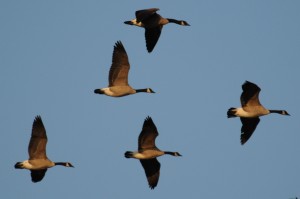
This coming and going of Canada geese has been going on for the 16 years I’ve lived in Haslett, Michigan, and most years, I look up from my computer, note that another flock has come in and then scan the lake for other, less common migrants, like this pie-billed grebe, which I saw exactly once.
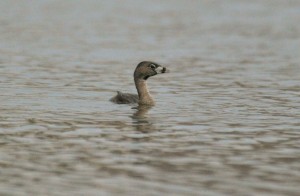
So when I looked outside recently to see what feathery critters were on our lake, I was surprised to see two white blobs amongst a flock of Canada geese. From a distance, they looked like this.
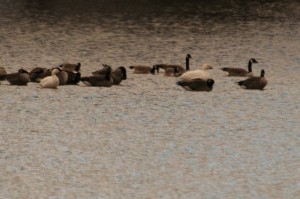
I’d seen two Aflac-type domestic ducks a few years back–both of which were taken out by horned owls–but there was something different about these white birds. They looked like Aflac ducks on steroids, but not as big as the Canada geese. As I sat contemplating what I was looking at, one of the white birds flap its wings, revealing a smear of black on its wing tips.
Back home, I got online and found photos of snow geese that looked similar to the lousy one I’d taken. Snow geese nest in the Arctic tundra, which meant my visitors had already flown a long way. I went on to read that they usually migrate in noisy, high flying flocks that swirl in a way that reminds some people of falling snow. That’d be nifty to see.
I went on to read that these geese are also called blue geese because they have a dark phase that some people think look blue. Consider though, that the Cornel University web site describes the adult snow goose in the blue phase as having a white head and front of neck, with a dark gray-brown body and, ergo, making no mention of any blue. Note also that all the snow geese in the blue phase that I saw online looked black if you ask me. But you didn’t. So let’s move on.
Since seeing my first snow geese was pretty exciting stuff, when I saw the flock wander over to the water’s edge, I ran to the other side of the lake and crept up behind an apartment building to take some better shots.
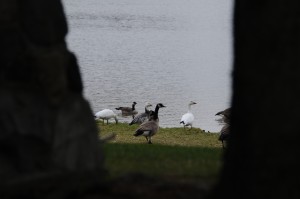
Right smack dab in the middle of my photo was another oddity, a mostly gray bird with a white head the same size as the white snow geese. I zoomed in for a better shot, got back online and determined that the gray one was an immature snow goose. The photo below shows two adult snow geese with one immature snow goose. I asked the Canada geese they were hanging out with to pose also, to provide a good size comparison.
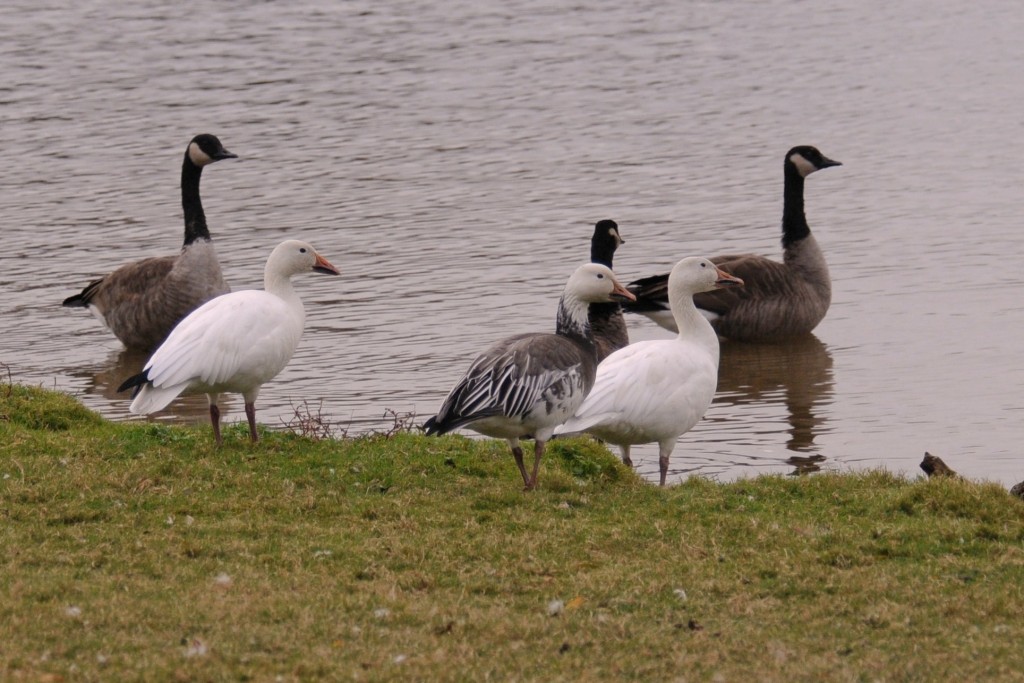
It just goes to show that all flocks that migrate through are worth a look. And that running to take a photo is a must. These snow geese took off an hour later, and I haven’t seen any more amongst the hundreds and hundreds of Canada geese that have come and gone since.

Amy – Your photos continue to amaze us. Thank you so much for your natural observations and kind notes on the natural world around us. It is a treat to be your neighbor.
i really impress this article click here